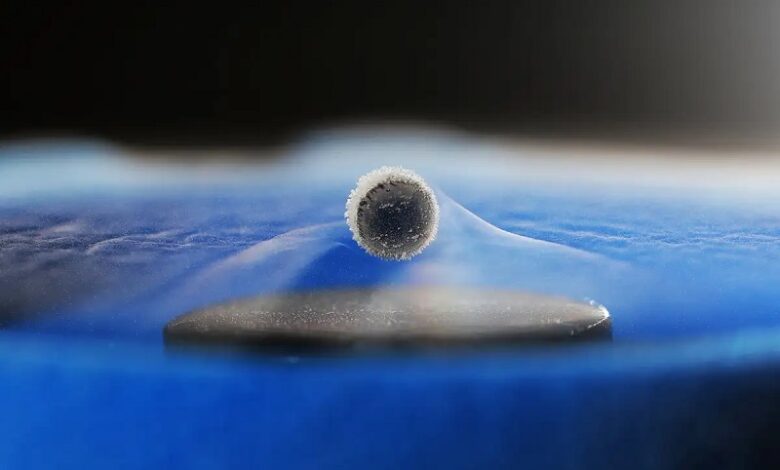Scientific Breakthrough Unveils ‘Demon Particle’ with Potential to Revolutionize Superconductors

In a groundbreaking discovery poised to reshape the world of superconductors, scientists have unearthed a remarkable ‘demon particle’ with the capacity to usher in a new era of technological possibilities. The findings, detailed in a study by researchers from the University of Illinois Urbana-Champaign, have been published in the prestigious journal Nature. The ‘demon particle,’ first hypothesized nearly seven decades ago by physicist David Pines, could hold the key to transforming superconductors as we know them.
Superconductors, a unique class of metals or alloys, boast an extraordinary ability to transmit electrical currents without encountering any resistance. However, conventional superconductors necessitate temperatures to plummet below the 100-degree Fahrenheit mark to maintain their distinctive properties. The recent strides taken by the University of Illinois researchers have led to the revelation of an elusive particle residing within the metal strontium ruthenate. This ‘demon particle’ is transparent, massless, and neutral, suggesting its potential to manifest regardless of temperature.
While superconductors have already made their mark in applications such as maglev trains and advanced magnetic resonance imaging (MRI) devices, the emergence of materials capable of achieving this feat at room temperature could reshape the technological landscape, paving the way for the creation of more powerful computing systems.
The ‘demon particle,’ characterized as a plasmon that mimics the behavior of a particle, falls under the category of quasiparticles. Peter Abbamonte, a physics professor at the University of Illinois Urbana-Champaign and the lead author of the study, highlighted the unique attributes of the ‘demon particle.’ He emphasized, “The vast majority of experiments are done with light and measure optical properties, but being electrically neutral means that demons don’t interact with light.” He further added that a different approach was required to investigate the phenomenon.
Strontium ruthenate (Sr2RuO4) emerged as the chosen testing ground for the research team due to its resemblance to high-temperature superconductors while remaining distinct from them. The journey to identifying the ‘demon particle’ was not without its surprises. As Ali Husain, a co-author of the study and former graduate student, recounts, “At first, we had no idea what it was. Demons are not in the mainstream. The possibility came up early on, and we basically laughed it off. But, as we started ruling things out, we started to suspect that we had really found the demon.”
However, the road to understanding the intricate functioning of this quasiparticle is far from over. Researchers acknowledge the need for further exploration, employing alternative observation methods to unveil the true nature and capabilities of the ‘demon particle.’ This trailblazing discovery, though met with initial skepticism, stands as a testament to the ever-evolving nature of scientific exploration and innovation.
As we delve into the uncharted territory of the ‘demon particle,’ we are reminded that the realm of science is a realm of endless possibilities. This discovery not only opens doors to redefining the boundaries of superconductors but also underscores the critical role of imagination, experimentation, and collaborative efforts in pushing the boundaries of human knowledge.
The revelation of the ‘demon particle’ by researchers at the University of Illinois Urbana-Champaign marks a monumental step towards revolutionizing superconductors and potentially altering the technological landscape. This discovery challenges conventional wisdom and invites us to rethink the boundaries of what is possible in the world of science and technology. As scientists continue to peel back the layers of this intriguing phenomenon, we stand on the precipice of unlocking new frontiers that could redefine the very foundations of modern innovation.
News Mania Desk / Agnibeena Ghosh 18th August 2023






